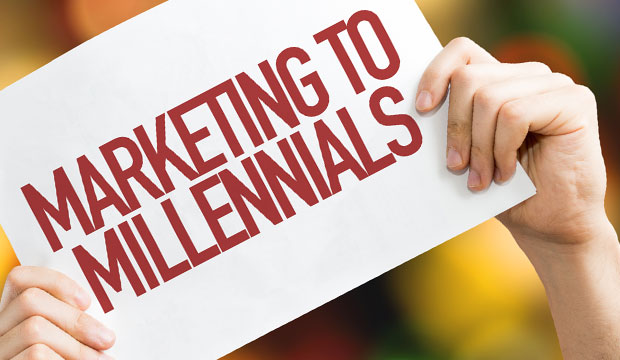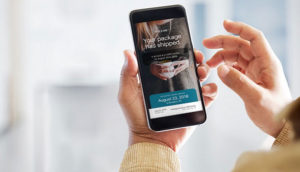Trying to do business without also having a modern CRM system is like walking around naked. You can do it, at least for a little while, but people will begin to think you’re weird — and the trouble is, those people are all potential customers.
CRM is essential today because, despite our reverence for the free market, it’s really more like free markets — plural — and we need to be relevant, to treat people the way they expect to be treated, in each venue we decide to play in.
Shortly before he died, Steve Jobs observed that the marketplace had bifurcated, and the traditional Bell curve we used to represent it actually had become two humps, sort of like a Dromedary camel becoming a Bactrian.
Jobs saw one market for good-enough products and the other for luxury items. His insight was that with modern technology goods and customer-facing systems, the merchandise in each group was essentially the same. In other words, much of the difference today comes from how products are sold and serviced.
Good-enough products had to be easy to use and intuitive in Jobs’ scheme, and luxury goods had to come with hands on service throughout the purchase and ownership process.
Splitting the Difference
That wasn’t so long ago. Wittingly or not, the observation drove CRM’s evolution to the point that today the suite is dripping with artificial intelligence and machine learning for insights into what to do for a customer next.
CRM is also over the top with journey maps, as well as chatbots that do a pretty good job of interfacing with customers. They will only get better too.
Still, nobody who gets the good-enough product, it turns out, likes being reminded that they didn’t spend big on the luxury item and all that service. We all like getting more than our fair share of service, especially if it’s free.
So modern CRM splits the difference and provides affordable service and support without quibbling, through technology. Now, I would love to say that our work is done here, but we both know better.
Here comes the rub. The other day I was reading an article from last year in Inc. magazine that brought home how disparate our markets are and, by implication, how much vendors need high-quality CRM today.
What once looked like a Bell curve and then looked like a camel has in a few short years come to resemble high tide at Huntington Beach. It’s now clearer than ever that people of different stripes, including different generations, come to marketplaces with very different needs. We knew that already — but maybe not its full extent.
Millennial Priorities
So, in the article, “73 Percent of Millennials are Willing to Spend More Money on This 1 Type of Product,” writer Melanie Curtin quotes a Neilsen report: “While 66 percent of global consumers are willing to pay more for sustainable goods, a full 73 percent of Millennials are.”
Neilsen’s definition of “millennials” is people born between 1977 and 1995. Others skew the timeline toward the present.
For instance, Pew Research brackets the group at those born between 1981 and 1997. Regardless, Pew and others rank millennials and baby boomers neck and neck in cohort size: 75.4 million millennials according to a 2015 U.S. Census study, vs. 74.9 million boomers.
Consider sustainability. As the author of a book with sustainability in the title, it warms my heart to think some of those people actually could find my book, but the CRM side of me also says whoa horsey! A CRM system better be able to distinguish between a younger customer and someone older who might have different priorities.
Sustainability is not a well-defined category, though you know it when you see it. It can mean everything and nothing, but generally it refers to things with long lifecycles — things that can be recycled easily, products and services that aren’t generally one and done. So paper napkins are not sustainable but recyclable paper plates, yes. Of course, renewable power generation, yes, yes!
Toward CRM Nirvana
Any market in which 66 percent of customers want to pay more for something — let alone a market with 73 percent thinking that way — ought to raise more than eyebrows. All of this speaks to the need for data that tells vendors concretely who customers are.
We might still rely heavily on the next best algorithm to help determine what’s next, but now we see that age cohort reasonably might be part of the calculations. I expect that simple discoveries like this will keep CRM developers busy for a long time as they continue to iterate toward CRM nirvana. At its heart, this means continuous improvement of process, as the CRM suite seems to be fairly well broadened at this point.
Show season is starting in CRM. It’s the time of year when almost every CRM vendor holds a conference in San Francisco, Las Vegas, Chicago, Dallas or Austin. Next week Oracle kicks it off with Modern Customer Experience (MCX) in Las Vegas. It will be a great chance to see the company’s CRM apps put through their paces without the dilution caused by all the database and middleware discussions of OpenWorld. Not that I mind, but as a CRM person, discussions of benchmarks can leave me cold.
At any rate, Oracle has been coming on strong in the last five years, making serious moves to the cloud and into CRM. It got serious, in my opinion, when Larry Ellison pointed to the cloud, and the company has spent billions to reach its rather complex goals in apps, platform and infrastructure.
It has only been in the last couple of years, though, that the company has achieved something like critical mass, which is why this edition of MCX will be so interesting. Rather than bringing so many products to market, the company has begun turning to process, and it’s process, I think, that drives the discussion about things like sustainability.






















































